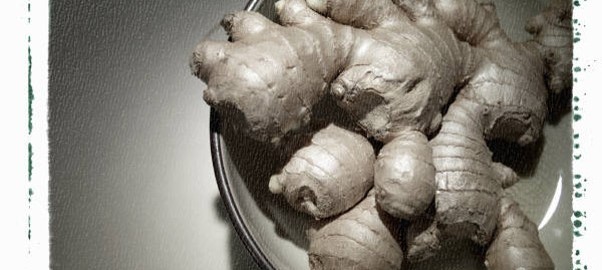Ginger is a fiery fresh spice that will boost the flavor of many dishes. The flavor blends so well with vegetables, fruits, and whole grains that you can use if to flavor anything from appetizers to desserts! Don’t let the knobby and woodlike appearance of gingerroot discourage you from using it. Here are a few tips and tricks that will make using ginger a snap!
SELECTING AND STORING
Buy ginger that’s firm and heavy for its size. Ginger keeps for several days at room temperature and several weeks refrigerated. To keep ginger at its prime, wrap loosely in a paper towel and place it in a paper bag in the refrigerator.
Choose ginger without too many knobs and bumps, which are harder to peel and cut.
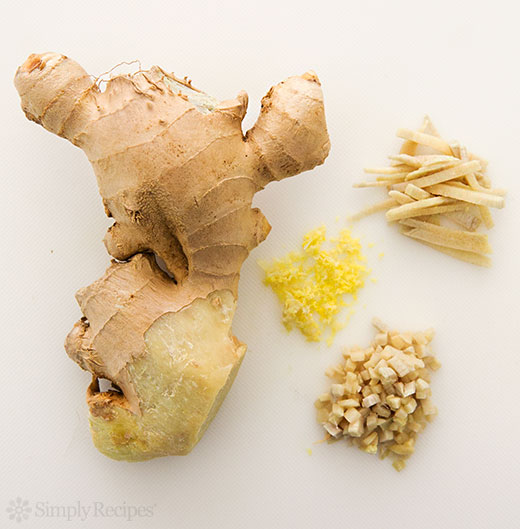 Photo from Simply Recipes. This site has a wonderfully photographed guide to preparing ginger here.
Photo from Simply Recipes. This site has a wonderfully photographed guide to preparing ginger here.
PEELING
You actually don’t need to peel ginger, but if your recipe calls for it, use a sharp vegetable peeler, paring knife, or a spoon (scrape the edge of the spoon against the ginger). If you have only used part of your gingerroot, wrap it tightly in plastic-wrap and freeze it (see below).
FREEZING GINGER – GREAT TIP!
If you freeze ginger, you will always have a supply on hand. Wrap tightly in plastic wrap. The ginger won’t be crisp, but will be fine for most recipes, easier to use, and will retain its flavor.
GRATING
A microplane zester works best for this (if you don’t have one, use a box grater). If your ginger is frozen (see above), you can do this at lightning speed.
SLICING
Ginger sliced into matchsticks works well in many salads and stir fries. Thinly slice the ginger crosswise with a sharp knife, and then cut these slices lengthwise into matchstick slivers.
PROCESSING
If you need a lot of ginger, you can process large quantities in a food processor fitted with a chopping blade.
These tips were adapted from Food for Thought: Healing Foods to Savor.
Recipes Featuring Ginger
- Cranberry Salsa Dip with Goat Cheese
- Curried Butternut Squash Soup with Ginger
- Sesame Noodles with Seasonal Vegetables
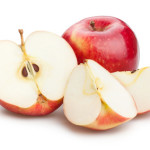 More Food Tips: Selecting,
More Food Tips: Selecting,
Storing, & Preparing
- APPLES: Selecting, Storing, and Preparing
- AVOCADOS: The science behind the best (and healthiest) guacamole (Washington Post, ACS Reactions)
- GRAINS: How to cook (UC Berkeley Wellness);
Handy Chart! (Popsugar) 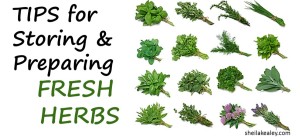 HERBS: Keep herbs fresh and prepare them like a pro
HERBS: Keep herbs fresh and prepare them like a pro
- LEMONS & LIMES: How to zest
- MANGOES: How to cut a mango (National Mango Board)
- SQUASH: How to cut and cook
- VEGETABLES: 60+ Healthy Way to Cook Vegetables. Discover healthy ways to cook your favorite vegetables from acorn squash to zucchini (A to Z) using this helful infographic.(UC Berkeley Wellness)
Cooking Tips to Improve Nutrition
Here are some tips to help you make healthy, nutrient-dense meals.
Replace oils with nut and seed butters
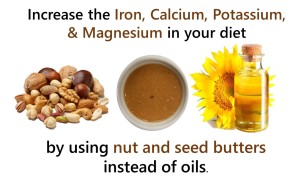 Many people are deficient in important minerals like calcium, iron, potassium, and magnesium because they aren’t getting enough of these minerals in the foods they eat. Food processing tends to remove fiber and important vitamins and minerals. While some oils do provide healthy fats, the extraction and refining process eliminates fiber, protein, and important minerals. Find out how you can use nut and seed butters instead of oils . . . Go to Article
Many people are deficient in important minerals like calcium, iron, potassium, and magnesium because they aren’t getting enough of these minerals in the foods they eat. Food processing tends to remove fiber and important vitamins and minerals. While some oils do provide healthy fats, the extraction and refining process eliminates fiber, protein, and important minerals. Find out how you can use nut and seed butters instead of oils . . . Go to Article
How to add more iron to your diet
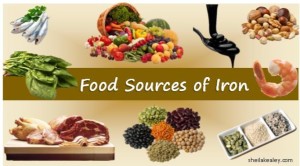 Are you trying to add more iron to your diet? Studies show that many teens and women don’t consume enough iron-containing foods, and this is an important contributor to iron deficiency. Knowing which foods contain iron and the best ways to absorb the iron can make a big difference to your iron intake. This article shows you how much iron you need, how to figure out iron content based on food labels, foods that enhance iron absorption, and how to design meals and snacks to maximize iron absorption. Go to Article
Are you trying to add more iron to your diet? Studies show that many teens and women don’t consume enough iron-containing foods, and this is an important contributor to iron deficiency. Knowing which foods contain iron and the best ways to absorb the iron can make a big difference to your iron intake. This article shows you how much iron you need, how to figure out iron content based on food labels, foods that enhance iron absorption, and how to design meals and snacks to maximize iron absorption. Go to Article
How to optimize protein intake for health
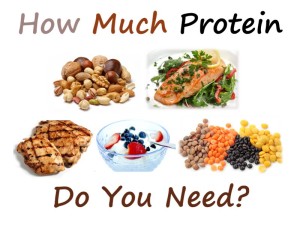 Although most people are eating enough protein, many could choose better protein sources and optimize how they distribute their protein intake throughout the day. For example, the average person eats too much protein for supper, and too little in the morning. Almost everyone can benefit from including some protein at most meals and snacks to help control blood glucose levels and feel full longer. Find out about your protein needs and the best way to distribute protein throughout the day. Go to article
Although most people are eating enough protein, many could choose better protein sources and optimize how they distribute their protein intake throughout the day. For example, the average person eats too much protein for supper, and too little in the morning. Almost everyone can benefit from including some protein at most meals and snacks to help control blood glucose levels and feel full longer. Find out about your protein needs and the best way to distribute protein throughout the day. Go to article
________
Share This:
